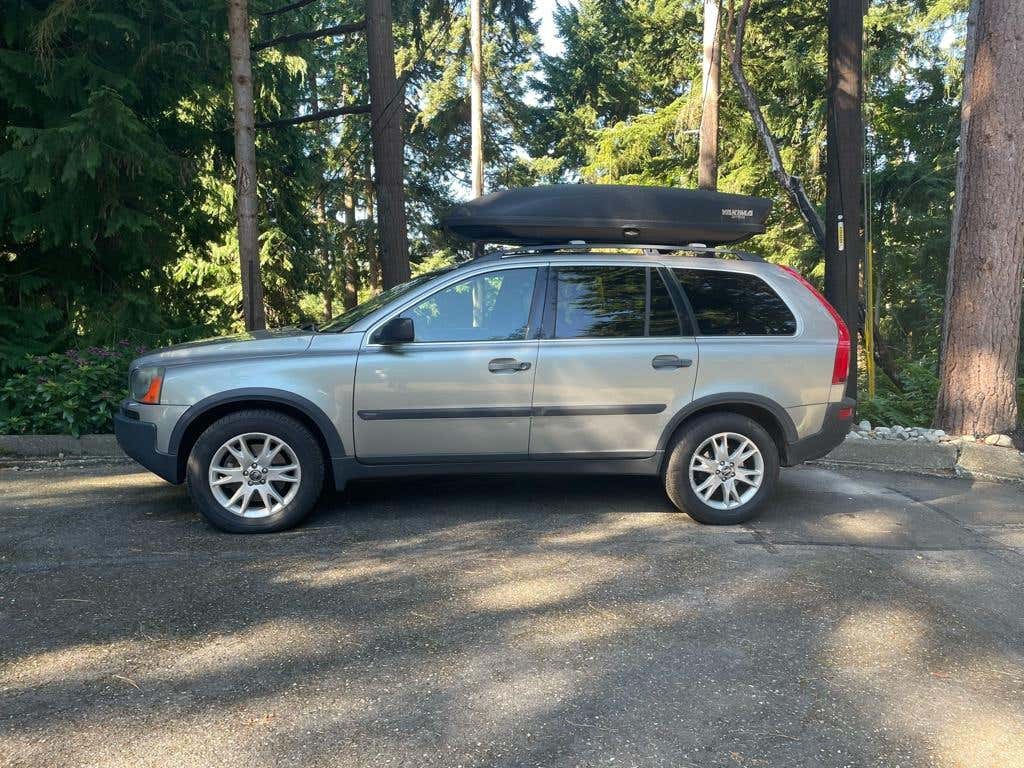My family has owned this 2005 XC90 2.5T AWD since 01/2020 and 215k miles. We are the 3rd owners. In that time it has served us well, helping a timid driver gain more confidence on the road, and providing me an outlet for tinkering, research, and practical problem solving.
I’m starting this thread as a single location for me to document the journey of reaching 250k miles and 400k km, and also as a place to request opinions and advice. Currently at 226k miles, I expect the next 24k will take 2.5-3 years which will put us at a good point where we can comfortably consider either a brand-new XC40/60 or a CPO XC90 (hopefully the auto market cools a bit by then).
Early on in the maintenance process I was focused on cost, thinking all manufacturers are equal. After refreshing half of the front suspension I learned this was false, and switched to OEM parts exclusively. Now that we have a finish line established, I am willing to back off this “OEM or else” requirement where it makes sense. If the auto market cools off in 3 years, I don’t think a 20-year old Plain-Jane family hauler with 250k is going to be worth any more with OE parts than without. My goal is to reach the finish line without concern of mechanical failures and have something that may be a decent first car for a teenager.
Mechanical work completed, by me, to date:
•Lower Control Arms (non-OEM)
•Outer tie rods (Suspensia, non-OEM)
•Front wheel bearings (non-OEM, replaced right again after 5k with SKF (OEM) due to failure!)
•Ball joints (Delphi, non-OEM)
•Front Struts (Sachs, OEM)
•Spring seats and bearings (Febi, OEM)
•Rotors and pads all around (Durago, these have been surprisingly good)
•Rear parking brakes (OEM)
•Sway bar end links (Lemförder, OEM)
•PCV box, hoses and fittings (Genuine)
•Cleaned throttle body
•Air filter (Fram)
•Oil changes every 5k (5w30 Mobil 1 High Mileage Synthetic with Bosch filters)
•New fuel injector #4 (Bosch, OEM)
•New front and side engine mounts (Hutchison, OEM)
•New torque mounts, lower and upper (Hutchison, OEM)
•New strut tower mounts (non-OEM from IPD)
Relevant work completed prior to my ownership:
•Spark Plugs, 190k
•Timing belt and water pump, 128k at 04/2015 (suspect non-OEM)
•Thermostat and housing (170k)
•Trans flush at 80k and 120k
My next post will document the work I plan to do this spring, which will round-out all deferred maintenance on the vehicle and get us to a proper baseline.
![Image]()
I’m starting this thread as a single location for me to document the journey of reaching 250k miles and 400k km, and also as a place to request opinions and advice. Currently at 226k miles, I expect the next 24k will take 2.5-3 years which will put us at a good point where we can comfortably consider either a brand-new XC40/60 or a CPO XC90 (hopefully the auto market cools a bit by then).
Early on in the maintenance process I was focused on cost, thinking all manufacturers are equal. After refreshing half of the front suspension I learned this was false, and switched to OEM parts exclusively. Now that we have a finish line established, I am willing to back off this “OEM or else” requirement where it makes sense. If the auto market cools off in 3 years, I don’t think a 20-year old Plain-Jane family hauler with 250k is going to be worth any more with OE parts than without. My goal is to reach the finish line without concern of mechanical failures and have something that may be a decent first car for a teenager.
Mechanical work completed, by me, to date:
•Lower Control Arms (non-OEM)
•Outer tie rods (Suspensia, non-OEM)
•Front wheel bearings (non-OEM, replaced right again after 5k with SKF (OEM) due to failure!)
•Ball joints (Delphi, non-OEM)
•Front Struts (Sachs, OEM)
•Spring seats and bearings (Febi, OEM)
•Rotors and pads all around (Durago, these have been surprisingly good)
•Rear parking brakes (OEM)
•Sway bar end links (Lemförder, OEM)
•PCV box, hoses and fittings (Genuine)
•Cleaned throttle body
•Air filter (Fram)
•Oil changes every 5k (5w30 Mobil 1 High Mileage Synthetic with Bosch filters)
•New fuel injector #4 (Bosch, OEM)
•New front and side engine mounts (Hutchison, OEM)
•New torque mounts, lower and upper (Hutchison, OEM)
•New strut tower mounts (non-OEM from IPD)
Relevant work completed prior to my ownership:
•Spark Plugs, 190k
•Timing belt and water pump, 128k at 04/2015 (suspect non-OEM)
•Thermostat and housing (170k)
•Trans flush at 80k and 120k
My next post will document the work I plan to do this spring, which will round-out all deferred maintenance on the vehicle and get us to a proper baseline.












